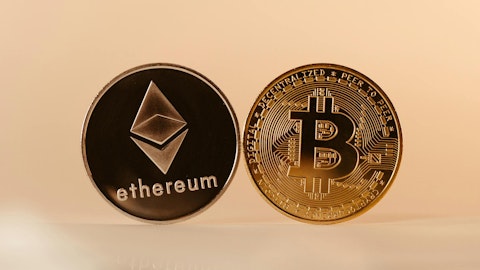On October 28, 2025, Bitwise Asset Management launched the BSOL and therefore joined the crypto ETF club. It’s marketed as the first US ETF to grant spot access to Solana and also offer staking rewards. This shows how complex the crypto ETF market has become.
The product will likely capture investors’ interest, as it offers many of the features they are looking for. It’s a way to diversify from Bitcoin and Ethereum ETFs, and the dual offering of price exposure and staking yield is an interesting innovation.
What are Crypto ETFs?
Crypto ETFs are exchange-traded funds whose value is tied to crypto. That way, it gives investors a chance to tie their investments to crypto prices without using crypto exchanges or buying crypto coins themselves.
The ETFs have quickly become a staple of investment portfolios, as they provide a good balance to hedge against more risk-averse investments. New altcoins are joining in quick succession, and it’s widely seen as a way to bridge the gap between crypto and traditional investments.
The Road to BSOL: New SEC Rules and a Fast-Track Path
Until just recently, the process for getting an ETF spot approved was long and complicated, and it took Bitcoin over a year. However, in September this year, the SEC approved a generic list of standard cryptos eligible for the spot.
This regulatory shift made things easier for Bitwise, and it’s part of a broader pro-crypto attitude the current administration has taken. There are even talks of setting up stablecoin ETFs, though these are of lesser value to investors. Cryptos are already widely adopted, and now that a regulatory landscape has made them safe, the government has taken a pro-business approach.
How the Bitwise Solana Staking ETF Works
The design centers on two pillars:
Spot SOL exposure. The fund holds all of its assets in Solana tokens. This means the fund’s value depends on the market price of Solana. In this regard, the fund is similar to any other crypto ETF.
Staking reward capture. The fund aims to stake 100 percent of its SOL holdings. That way, holders also receive rewards from staking as if they owned actual Solana coins. These rewards are then added back to the fund. It’s the first ETF to do so.
A Blockbuster Debut: Volume, Flows, and Industry Reaction
The launch made somewhat of a splash within the industry. Millions of dollars in inflows came in as soon as the ETF was listed, and strong trading activity indicated market appetite for such a financial product.
The launch also caused a scramble among other issuers such as Grayscale Investments and VanEck Associates Corporation. They were in the process of launching their own Solana products, and the Bitwise success caused them to hurry along. According to experts, the ETF market has been rising ever since the product was first introduced.
Why Solana
Solana offers a compelling alternative to Bitcoin. It has a high-throughput, low-fee layer-1 blockchain with an active DeFi ecosystem and supports tokenization and NFTs. The large, liquid futures also made it a great subject for the ETF spot, making the authorization process easier.
The second wave of crypto ETFs includes smaller altcoins after Bitcoin and Ethereum have proven profitable. Solana is therefore the perfect candidate to lead this wave. The additional staking feature is also a plus, since it shows how innovative cryptos can be within traditional finance.
The Risks
There are also risks when investing in a Solana ETF, as with any other investment. The biggest one is the volatility common to any crypto investment. SOL’s value can rise quickly, but it can also drop, and both have happened before. That’s the main point of adding crypto ETFs to the portfolio.
Regulatory treatment is another important source of risk that investors should be aware of. Cryptos themselves are still somewhat new to the government’s view, and crypto ETFs even more so. As investor pools for this start to grow, new regulatory practices may emerge, even from pro-business, crypto-friendly administrations.
To Sum Up
Bitwise Asset Management has introduced a Solana ETF. This is a part of a broader trend of introducing crypto ETFs. These allow the owners to invest in crypto and earn based on its value without having to own it outright. This one is somewhat different from most other ETFs, since it also allows holders to gain from staking Solana.
As soon as the asset was live, it found a pool of investors, and trading shows the market finds value in the new product. This isn’t to say that purchasing this ETF isn’t without its risk, most stemming from crypto volatility. Crypto regulations may also change soon, adding further uncertainty to the investment.





